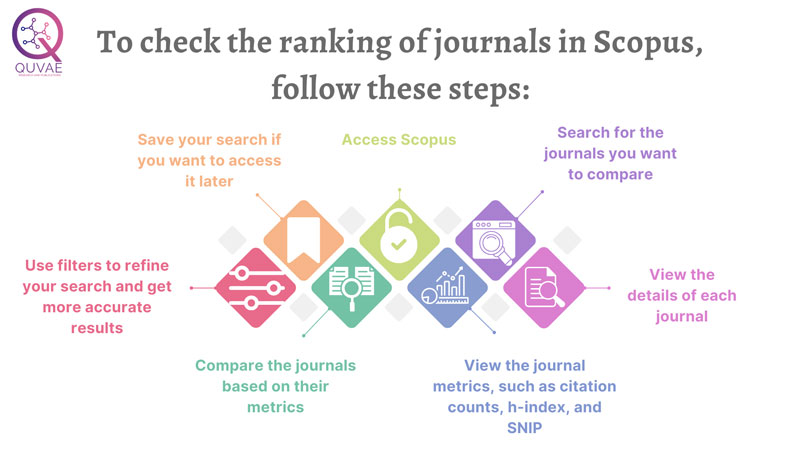Scopus is a bibliographic database that contains abstracts and citations for academic journal articles. It is one of the most popular databases used by researchers to find relevant literature for their work. Scopus provides a ranking system for journals based on their impact factor. Researchers widely use this ranking system to determine a journal’s quality. In this article, we will discuss How to Check the Ranking of Journals in Scopus.
How to Check the Ranking of Journals in Scopus
Step 1: 
To access Scopus, you need to craete an account in the database. If you are affiliated with an academic institution, you can access Scopus through your institution’s library.
Step 2: Search for Journals
Once you have access to Scopus, you can search for journals using the search bar on the homepage. You can search for journals by title, ISSN, or subject area. Scopus covers journals from a wide range of subject areas, including science, technology, social sciences, and humanities.
Step 3: View Journal Details
Once you have found a journal in Scopus, you can view its details by clicking on the title. This will take you to the journal’s overview page, which provides information about the journal’s scope, editorial board, and publisher.
Step 4: View Journal Metrics
To view a journal’s metrics, including its impact factor, click on the “Metrics” tab on the journal’s overview page. This will display a list of the journal’s metrics, including its CiteScore, SJR, and SNIP. The impact factor is calculated based on the number of citations received by the journal’s articles in the previous two years.
Step 5: Compare Journals
Scopus allows you to compare the metrics of different journals. To do this, you need to select the journals you want to compare and click on the “Compare journals” button. This will display a side-by-side comparison of the selected journals’ metrics, allowing you to compare their impact factors and other metrics.
Step 6: Use Filters
Scopus provides filters that allow you to refine your search for journals. You can filter journals by subject area, publisher, country, and language. This can be useful if you are looking for journals in a specific field or region.
Step 7: Save Your Search
If you want to save your search for journals, you can create a Scopus account and save your search query. This will allow you to access your search results later and receive alerts when new articles or journals that match your search criteria are added to Scopus.
Conclusion
Checking the ranking of journals in Scopus is an important step for researchers who want to publish their work in high-quality journals. Scopus provides a comprehensive ranking system that allows researchers to compare the impact factors of different journals and filter their search results to find journals in specific subject areas. By following the steps outlined in this article, you can easily check the ranking scopus indexed journals with fast publication and make informed decisions about where to publish your research


